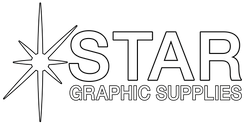Plate Chemicals
Plate Chemicals
A crucial part of the offset printing process, responsible for preparing, developing, maintaining, and cleaning printing plates. These chemicals ensure that the plates are properly processed and maintained for high-quality print runs. In traditional offset printing, light-sensitive plates are exposed to create the image areas that will transfer ink to the substrate. The effectiveness and longevity of printing plates rely heavily on the correct use of plate chemicals throughout the prepress and press processes.
- Plate Developers: Plate developers are used to process exposed printing plates, typically in the prepress stage. After the plate is exposed to light (in the case of conventional plates), developers chemically reveal the image areas by removing unexposed emulsion or sensitized coating.
- Revealing image areas: These chemicals make the image areas ink-receptive and the non-image areas water-receptive, allowing for proper ink transfer during printing.
- Thermal and photopolymer plates: Different plate types, such as thermal or photopolymer plates, require specific developer formulations to ensure accurate development.
- Plate Cleaners: Throughout the printing process, plates are exposed to ink, fountain solution, and other contaminants that can accumulate on the surface, affecting print quality. Plate cleaners remove dried ink, oxidation, and dirt from the plate surface, keeping it clean for consistent ink transfer.
- Removes oxidation and residue: Plates can oxidize or become glazed due to environmental factors and prolonged use. Plate cleaners dissolve these residues, ensuring plates remain in optimal condition.
- Improves ink adhesion: By keeping the plates clean, plate cleaners help maintain the integrity of the image areas, improving ink adhesion and ensuring sharper, more vibrant prints.
- Gum Arabic: Gum Arabic is a widely used plate chemical that serves as a desensitizer for non-image areas, making them hydrophilic (water-attracting) and resistant to ink. It is often applied after development to protect the non-image areas and prevent ink from adhering to these parts of the plate.
- Desensitizes non-image areas: By coating the non-image areas, gum Arabic ensures that ink will not transfer to unwanted areas, preventing scumming and toning during printing.
- Used for plate storage: When plates need to be stored between print runs, a layer of gum Arabic is often applied to preserve their integrity and prevent oxidation.
- Plate Preserver/Protectors: These chemicals are used to protect printing plates during extended periods of inactivity, such as between print jobs. Plate preservers create a protective layer over the plate, preventing oxidation, dust buildup, or contamination, and ensuring the plate is ready for reuse.
- Extends plate life: By preserving plates during downtime, these chemicals reduce wear and tear, extending the plate’s lifespan and reducing the need for frequent replacements.
- Plate Conditioners: Plate conditioners restore the hydrophilic properties of the non-image areas after cleaning, helping to maintain the ink-water balance on the plate. They are often used in combination with cleaners to keep plates in optimal condition throughout print runs.
- Restores surface properties: Conditioners re-establish the water-attracting characteristics of the non-image areas, ensuring that ink is properly repelled from these sections.
- Prevents ink scumming: Regular use of conditioners helps to prevent ink from creeping into non-image areas, reducing the risk of scumming, which can affect print quality.
- Plate Finishers: Finishers are applied after the cleaning or development process to provide an additional protective layer to the plate, ensuring that it remains clean and ready for production. These chemicals are especially important in environments where plates may be exposed to contaminants or oxidation between jobs.
- Anti-static properties: Some plate finishers contain anti-static agents that reduce static buildup on plates, preventing dust attraction and improving print consistency.
- Improves durability: Plate finishers can also strengthen the surface of the plate, making it more resistant to abrasion or wear during the printing process.
- Desensitizers: These chemicals are used to treat the non-image areas of plates, ensuring they remain water-attracting (hydrophilic) and ink-repellent throughout the print run. Desensitizers are essential for maintaining clean, high-quality prints by preventing ink from migrating to unwanted areas.
- Prevents toning and ghosting: By keeping the non-image areas free from ink, desensitizers help prevent toning (grayish areas) and ghosting (faint image repetition), which can degrade print quality.
- Acid Neutralizers: In some cases, plates may be exposed to acidic conditions due to residual chemicals or environmental factors. Acid neutralizers are used to balance the pH levels on the plate, preventing corrosion and prolonging plate life.
- Maintains plate integrity: Neutralizers protect plates from acidic damage, ensuring they perform optimally throughout the print run.
- Environmental Considerations: The shift toward environmentally friendly printing has led to the development of plate chemicals that are less harmful to the environment. Many modern plate chemicals are biodegradable, non-toxic, or have reduced VOC (volatile organic compound) content to meet environmental regulations.
- Eco-friendly plate cleaning and developing: Many manufacturers offer eco-friendly solutions that provide the same cleaning and protection benefits while minimizing environmental impact.
-

Mitsubishi SilverMaster Activator SLM-AC - Case (4 Gal)
Mitsubishi
$198.00Mitsubishi SilverMaster Activator SLM-AC - Case (4 Gal) SLM- AC’s job is photographic development. SLM-AC takes areas on the plate hit by light and turns them black, causing those areas to become a non-image and water-loving part of the plate. It...SLM-AC- SKU:
- SLM-AC
- Weight:
- 38 LBS
$198.00 -

Mitsubishi SilverMaster Etching Solution SLM-OHIII - Case of 6
Mitsubishi
$94.00Mitsubishi SilverMaster Etching Solution SLM-OHIII (QT) - Case of 6 MSDSSLM-OHIII- SKU:
- SLM-OHIII
- Weight:
- 12 LBS
$94.00 -

Mitsubishi SilverMaster Stabilizer SLM-ST - Case (4 gal)
Mitsubishi
$169.00Mitsubishi SilverMaster Stabilizer SLM-ST - 1 Case (4 Gal) SLM-ST Stabilizer SLM-ST stabilizer solution prepares the plate for the press by lowering the plate’s pH to a level that’s just right for offset printing. SLM-ST Stabilizer is...SLM-ST- SKU:
- SLM-ST
- Weight:
- 38 LBS
$169.00
